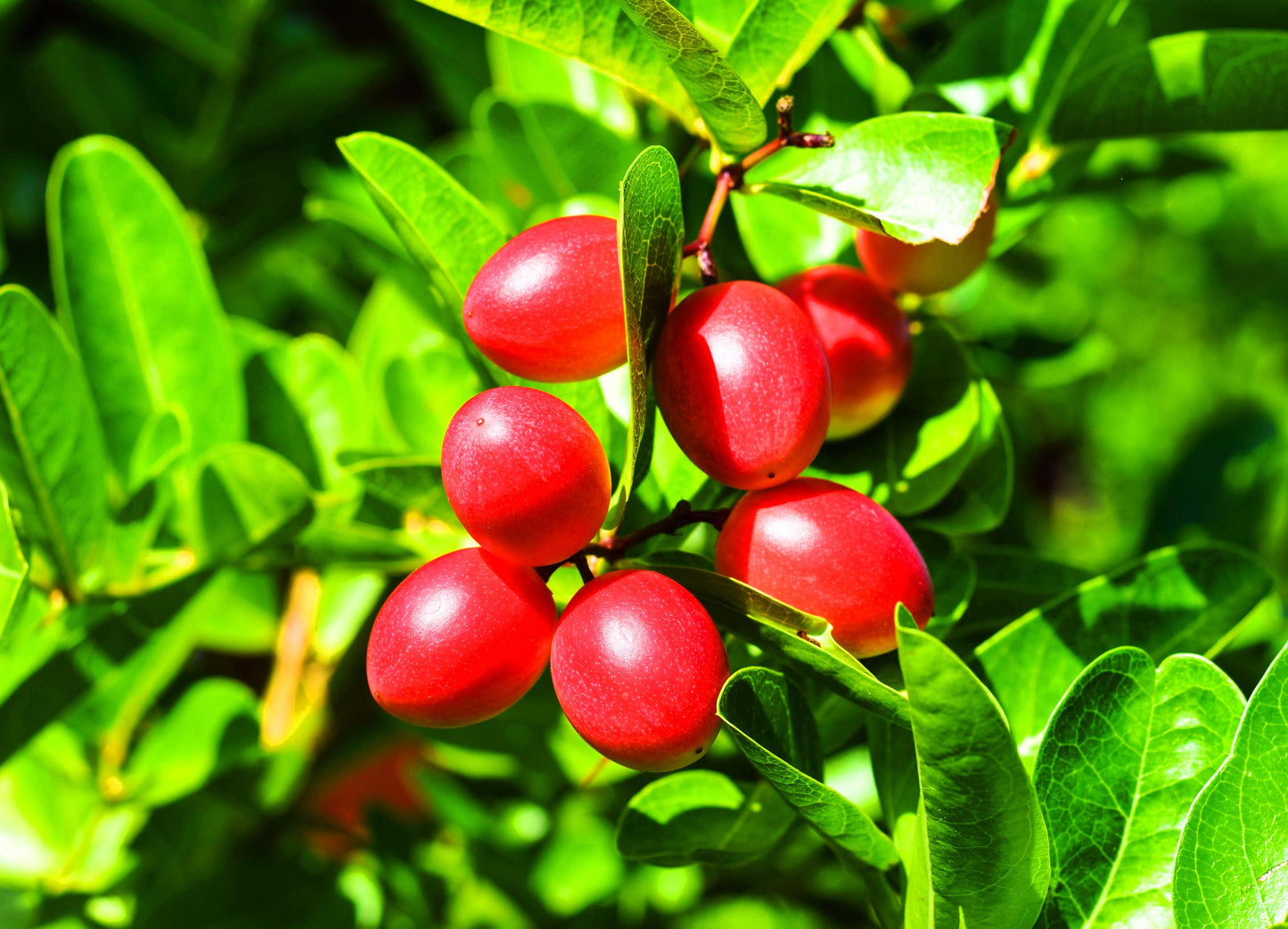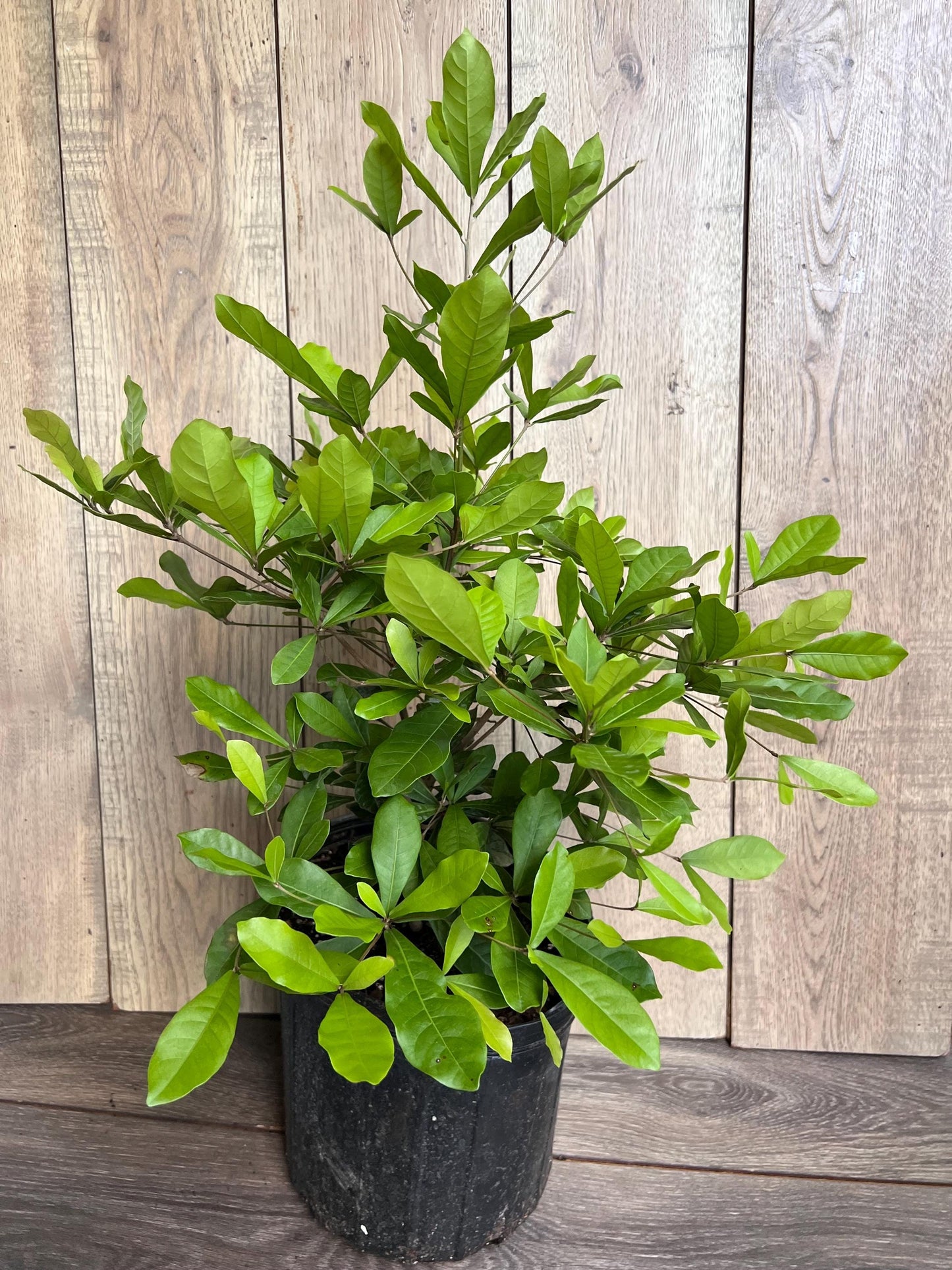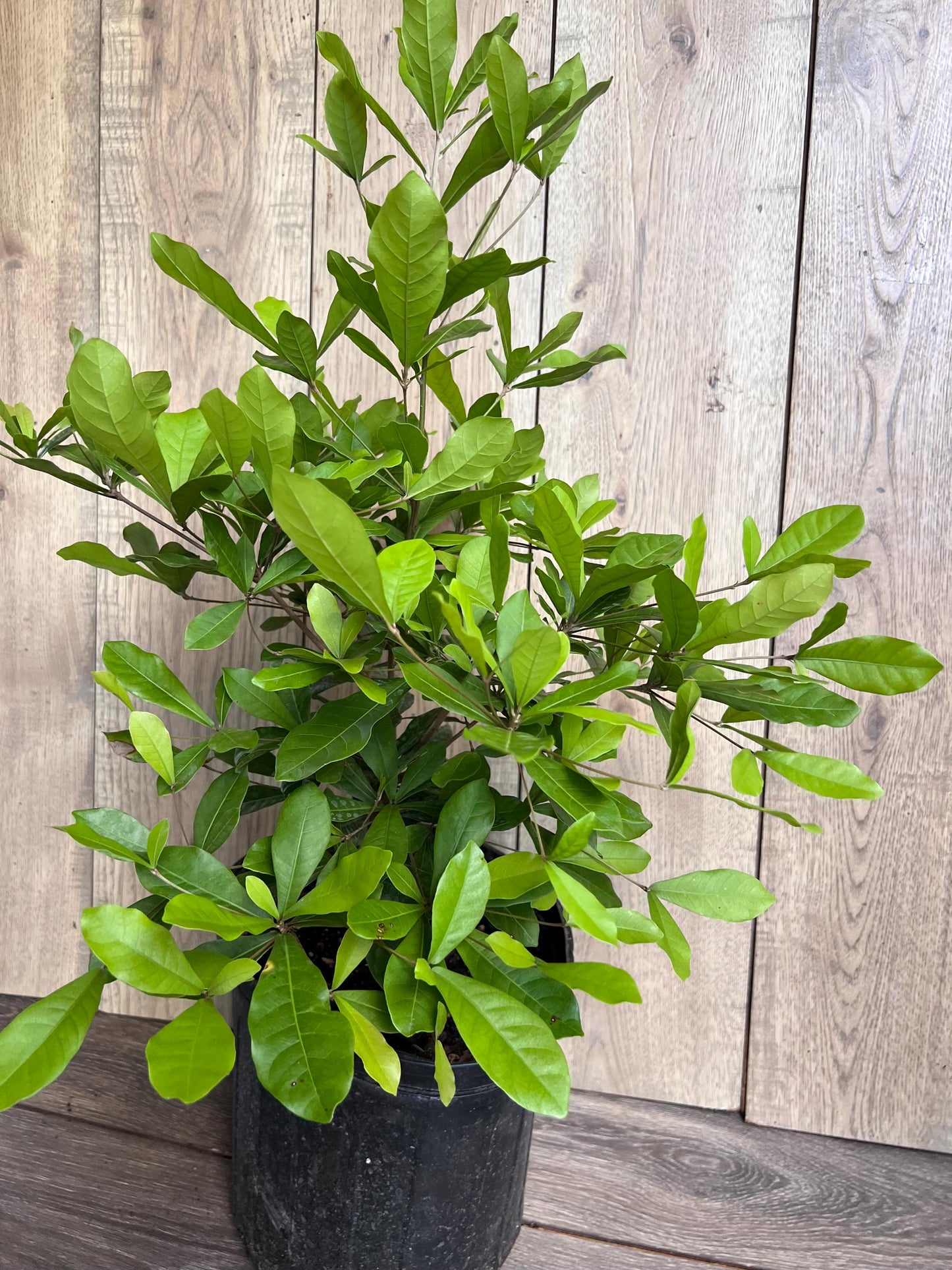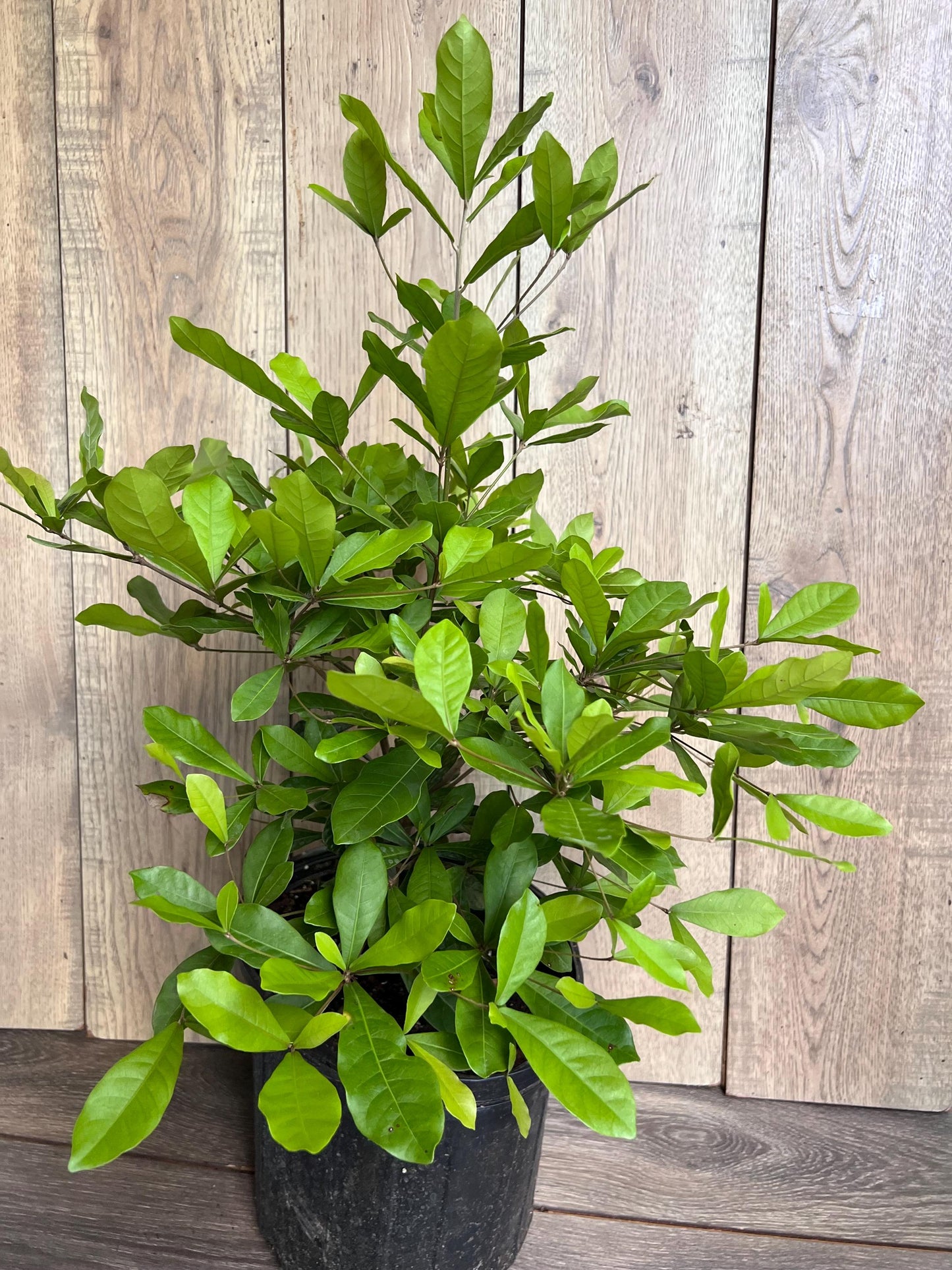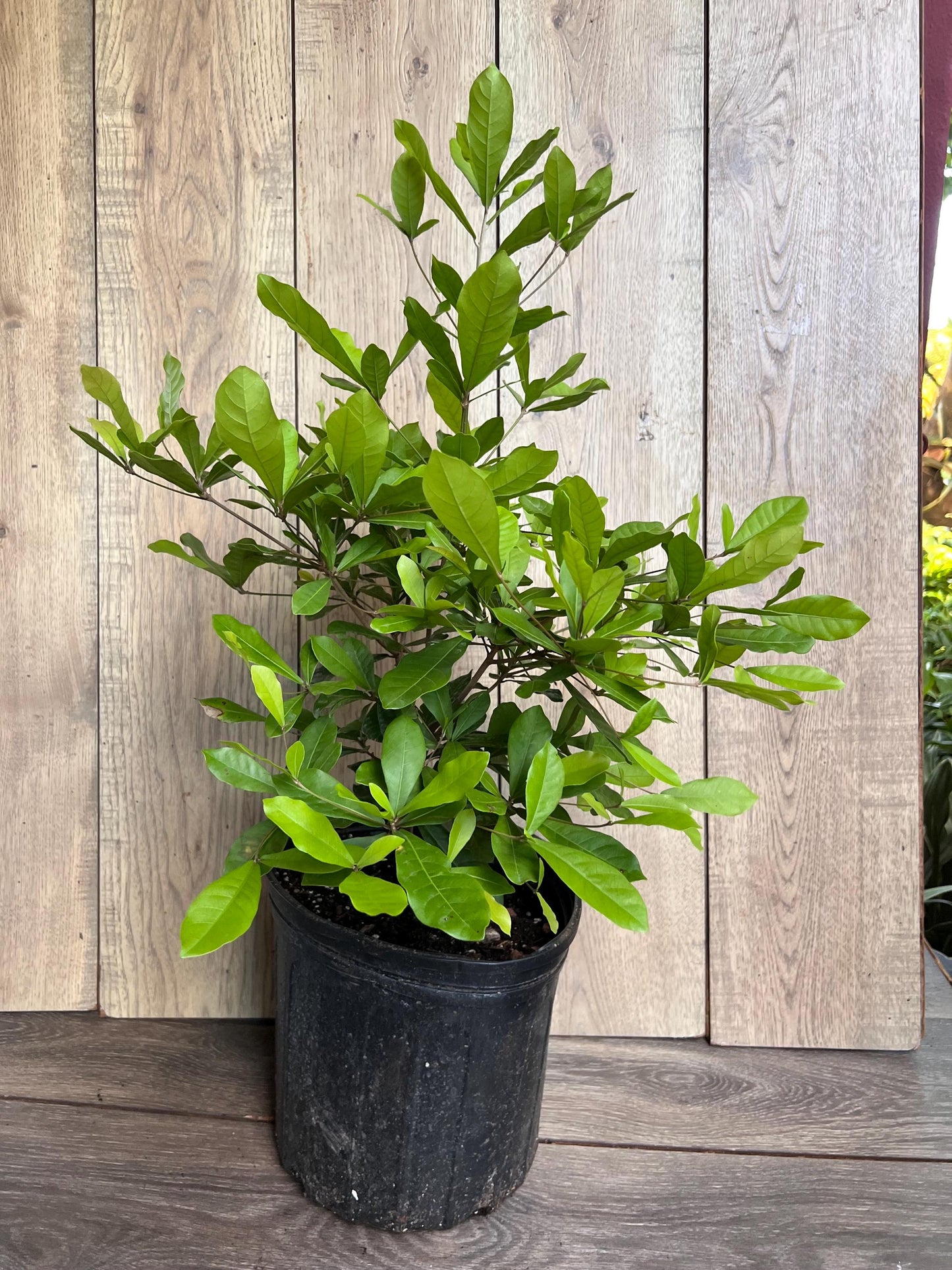Miracle Fruit tree in 3 Gallon pot, Synsepalum dulcificum
Miracle Fruit tree in 3 Gallon pot, Synsepalum dulcificum
Couldn't load pickup availability
Note: You will receive 1 miracle Fruit tree in 3 gallon pot similar to the pictures.
Miracle Fruit (Synsepalum dulcificum) is a unique, evergreen shrub native to West Africa, prized for its ability to alter the perception of taste. The fruit contains a glycoprotein called miraculin, which binds to taste buds and makes sour foods taste sweet for 30 minutes to an hour. The fruit is bright red when ripe and about the size of a small berry. Miracle fruit is popular for its novelty and potential health benefits, especially for those with taste disturbances or diabetes. The plant thrives in tropical and subtropical climates, requiring specific conditions to flourish.
Care Guide for Miracle Fruit
1. Light
- Bright, Indirect Light: Miracle fruit plants prefer bright, indirect light to avoid leaf scorch. If growing indoors, place near a south- or east-facing window. Outdoors, partial shade or filtered sunlight is best, especially in hot climates.
2. Temperature
- Warm, Humid Conditions: Thrives in temperatures between 70°F to 85°F (21°C to 29°C). Miracle fruit is sensitive to cold and should be protected from temperatures below 50°F (10°C). In cooler climates, grow it in a pot and bring it indoors during the winter.
- Humidity: Prefers high humidity (60-70%). Indoors, consider using a humidifier or misting the leaves occasionally. Avoid excessive water on the leaves, which can cause fungal issues.
3. Soil
- Acidic, Well-Draining Soil: Miracle fruit requires acidic soil with a pH of 4.5 to 5.5. Use a potting mix formulated for acid-loving plants, such as those designed for azaleas, or amend the soil with peat moss or pine bark to increase acidity. Avoid heavy, clayey soils that retain moisture and can cause root rot.
4. Watering
- Consistent Moisture: Water regularly to keep the soil consistently moist but not soggy. Water when the top of the soil feels slightly dry. Ensure good drainage in the pot or planting area to avoid waterlogging, which leads to root rot.
- Avoid Chlorinated Water: Miracle fruit is sensitive to chlorine and fluorine. Use filtered or distilled water if possible to avoid damaging the plant.
5. Fertilization
- Balanced, Acidic Fertilizer: Use a slow-release, balanced fertilizer designed for acid-loving plants (azalea or camellia fertilizers are ideal). Apply during the growing season (spring to summer) and reduce feeding in the fall and winter when the plant is dormant. Avoid fertilizers with high phosphorus, which can damage the roots.
6. Pruning
- Light Pruning: Miracle fruit does not require heavy pruning but should be lightly trimmed to maintain shape and remove dead or damaged growth. Prune after flowering to encourage more growth and fruit production. Remove any weak or spindly growth, especially when grown in containers.
7. Pollination
- Self-Pollinating: Miracle fruit is self-pollinating, so it does not require another plant to produce fruit. However, hand-pollination (using a small brush to transfer pollen between flowers) can help ensure better fruit set, especially when grown indoors where natural pollinators are absent.
8. Pests and Diseases
- Pests: Miracle fruit is relatively pest-resistant but can be affected by spider mites, aphids, and mealybugs, particularly in dry conditions. Treat infestations with insecticidal soap or neem oil.
- Diseases: The most common issue is root rot, which occurs from overwatering or poorly draining soil. Ensure good drainage and avoid waterlogging. Fungal problems can arise in high humidity, so good airflow is essential.
9. Container Growing
- Growing in Containers: Miracle fruit is well-suited to container growing, especially in regions with cooler winters. Choose a pot with good drainage and use a light, acidic soil mix. Place the plant in a spot that gets indirect light and is protected from drafts. If growing indoors, ensure good airflow to prevent fungal issues.
10. Fruit Production
- Fruiting: Miracle fruit starts producing berries after 3-4 years of growth. The fruit ripens after blooming and contains a single seed. To experience the taste-altering effect, simply eat the berry raw. The miraculin in the fruit will make sour foods taste sweet for 30 minutes to an hour.
- Fruit Ripening: Fruit takes several months to mature, and the plant may produce fruit more than once a year under optimal conditions.
Summary
Miracle fruit thrives in warm, humid conditions with acidic, well-draining soil and bright, indirect light. It requires consistent moisture but well-drained soil to avoid root rot. Regular fertilization with an acidic fertilizer supports healthy growth. With proper care, Miracle fruit is a fascinating plant that produces berries capable of making sour foods taste sweet due to the compound miraculin, offering both novelty and potential health benefits.
Share
